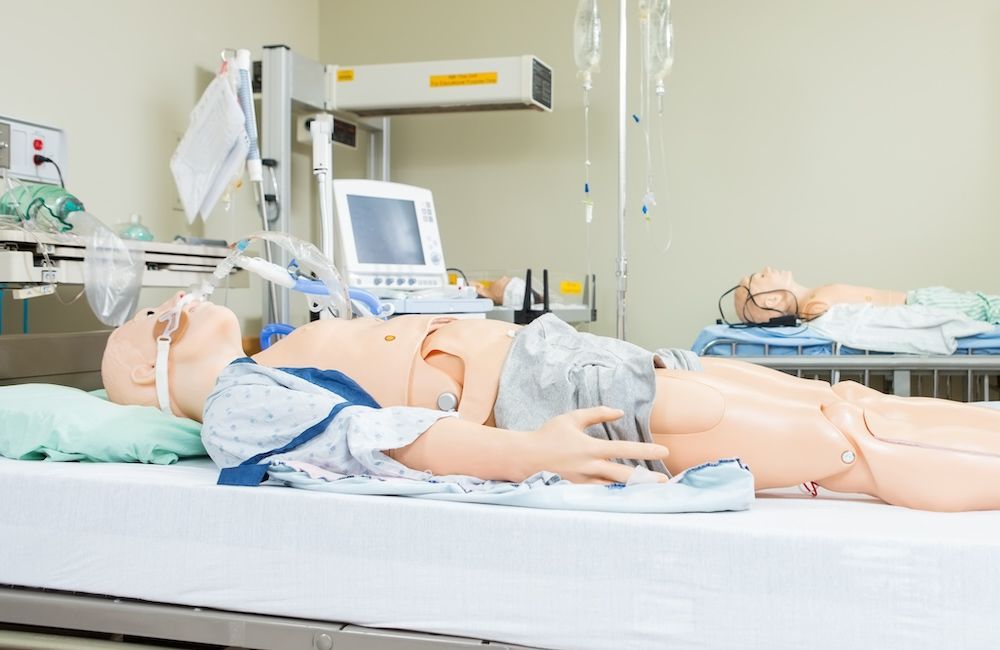How to Start a Healthcare Simulation Program in a Small or Rural Hospital
Clinical simulation is an incredibly efficient, well-liked, and successful learning modality for healthcare workers. In small towns, rural, and semi-rural environments, there can be challenges in the establishment of a healthcare simulation program. These challenges may be financial, resource, and/or time-based. Like a large-scale simulation center, the high dollar budget and the latest manikins and technology are the desires for most clinical simulation programs. However, this is often not feasible. This article by Erin Carn-Bennett, MSN, RN, will explore the support of and the establishment of a clinical simulation program in a small or remote hospital.
Importance of Clinical Simulation
Clinical simulation is an effective way for participants to utilize experiential learning that translates into an improvement in practice with patients. Despite the challenges to provide education in a small or remote hospital, clinical simulation is worth the sustained effort required. As a small or remote hospital is quite different from a large or tertiary-level clinical center, physicians on clinical rotations have an excellent opportunity for learning outcomes. These outcomes can occur in the clinical simulation based on the resources (often limited). The same constraints are relevant for other healthcare staff, such as nurses or other support staff, who are new to the small hospital or remote healthcare environment.
Sponsored Content:
Investing in people first rather than technology and manikins is a must, particularly in the small or remote hospital environment. Ensure that multidisciplinary team members are given equal education opportunities as much as possible. For example, if a medical team member is in attendance at a healthcare simulation course, encourage a nurse also to attend. Interprofessional collaboration will give breadth to the clinical simulation program. Consideration to other support staff having access to healthcare simulation courses should also be considered. If finances are a barrier to education, approach the delivery team of the course and ask if there are discounts, particularly for nurses and support staff to attend.
Utilize the Clinical Simulation Zones Methodology
Roussin and Weinstock’s (2017) foundational article, SimZones: An Organizational Innovation for Simulation Programs and Centers, provides a clear framework and program that would be incredibly effectively utilized in a small or remote hospital’s clinical simulation program. Despite the location, be precise and clear in the healthcare simulation program curriculum plans. The ability to speak the same language and have a clear plan for the clinical simulation program curriculum will assist in the healthcare simulation program’s success.
Make a Roster of Facilitators and Curriculum
Sponsored Content:
Once trained facilitators and those interested in involvement are established in the clinical simulation program, the development phase can commence. Ideally, all involved facilitators will have received formal clinical simulation education. However, realistically, this is often not the case. At times, the establishment of a healthcare simulation program can feel a lot like the metaphor of building a plane while flying the plane. Don’t let these barriers stop the program from starting. Have long-term goals for the program that are viable. Once the team is clear, have a roster of responsibilities for the weeks of the year and topics laid out. Ensure that those responsible for the clinical simulation education do not have roster clashes and can facilitate the clinical simulations.
Base Curriculum on Common Emergencies
The creation of a healthcare simulation program curriculum can feel like an arduous task. Dependent on the clinical simulation experience of participants, starting in a lower zone of clinical simulation, such as zone one, may be advisable. If you are still stuck on where to begin with your simulations, start with the organization’s local emergency, PALS, or ALS algorithms. Base clinical simulation scenarios on these topics as well as any physician training expectations or nursing base knowledge expectations. From there, build the clinical simulation curriculum alongside the “SimZones.” Many other resources around clinical simulation scenarios and curriculums can be found online and on HealthySimulation.com. Once the basics of a curriculum are built into a scenario library and categorized into “SimZones,” other scenarios can easily be built alongside these based on the educational requirements of teams and individuals.
Have an Annual Plan and Work Across Departments
An annual plan for a clinical simulation program is invaluable for all involved. Base the annual curriculum plan around rotations of physicians and the educational priorities for these rotations while on service in the small and remote hospital. Also, take other specialties’ educational requirements into account and weave them throughout the healthcare simulation program. These may include new graduate nurses and other support specialties and technicians. Senior healthcare workers’ learning needs should also be planned for. Involvement of senior staff in the clinical simulation program can assist with engagement in the clinical simulation program.
However, as a facilitator, there may be some hesitation to be guest faculty in a department separate from the usual clinical department. However, this can be a powerful experience as a clinical simulation debriefer. A guest faculty facilitator can add depth to clinical simulation scenarios and can be an incredibly powerful experience for all. This experience will allow facilitators to truly allow for genuine curiosity and potential vulnerability. Have a local expert alongside for any specific clinical questions related to the area.
Consider the creation of a healthcare simulation interest group or committee in a small or remote hospital, no matter how small the facility. An open invitation to all specialties can allow for the progression of participants and the growth of programs. Regular meetings and membership in international clinical simulation societies of interest can assist with the group’s direction. Journal clubs and reports after any courses attended to share can also be useful in the maintenance of group interest.
View the HealthySimulation.com LEARN CE/CME Platform Webinar Important Considerations When Designing a New Simulation Center to learn more!
Link in with Larger Clinical Simulation Operations
As a small or remote hospital, there is a lot of use in the creation of a bond with larger clinical simulation institutions. This bond can be incredibly useful for both organizations. For larger-scale clinical simulation organizations, there may be some bandwidth to supply mentorship and support to those with less resources, financially or otherwise. These bonds may be formed through attendance of clinical simulation courses, conferences, or connections with others through professional relationships or through online networks.
This article has discussed establishing a clinical simulation program in a small or remote hospital. Although these facilities often have less resources when compared to larger organizations, the need for clinical simulation is still strong. Educational needs for those in a small or remote organization differ from others; however, an incredibly impactful and transformative clinical simulation program is still possible with consideration and application of appropriate curriculum design scaffolds.
Learn More About Healthcare Simulation Programs!
Erin Carn-Bennett is a Simulation Nurse Educator for the Douglas Starship Simulation Programme in Auckland, New Zealand. Carn-Bennett has her Masters of Nursing and has an extensive nursing career within pediatric emergency and also nursing management. She is passionate about debriefing and all things simulation. Carn-Bennett is a member of the IPSS board of directors. Carn-Bennett is the lead host of the podcast Sim Nurse NZ.
Sponsored Content:



















